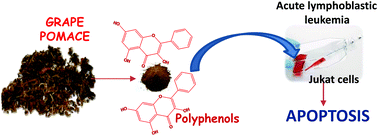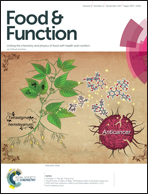Role of epigenetic regulation on the induction of apoptosis in Jurkat leukemia cells by white grape pomace rich in phenolic compounds
Abstract
Grape pomace is a rich source of phenolic compounds commonly employed for elaboration of dietary supplements. The aim of the present study was to investigate the anticancer effect of a purified white grape pomace extract (PWGPE) in acute lymphoblastic leukemia Jurkat cells and to characterize the underlying mechanism. Apoptosis, mitochondrial membrane potential and reactive oxygen species (ROS) levels were assessed by flow cytometry and protein expression levels were analysed by Western blotting. PWGPE induced apoptosis in Jurkat cells in a time- and concentration-dependent manner. The anticancer effect was associated with an increased expression of p73 and down-regulation of pro-survival factors, including p-Akt, Bcl-2, and survivin. PWGPE reduced the expression of several proteins that block the expression of apoptosis-related genes such as DNMT1, HDAC1/2, UHRF1, and the polycomb group protein members: EZH2, SUZ12, and BMI1. In addition, the extract induced the formation of ROS, whereas pre-treatment with PEG-catalase and N-acetylcysteine prevented the ROS formation and markedly decreased the induction of apoptosis. These findings suggest that PWGPE-induced apoptosis in Jurkat human leukemia cells, is mediated by mitochondrial depolarization and caspase-3 cleavage, and depends on ROS generation and regulation of epigenetic gene silencing. Therefore, PWGPE may play an important role in the treatment of acute lymphoblastic leukemia (ALL).



 Please wait while we load your content...
Please wait while we load your content...